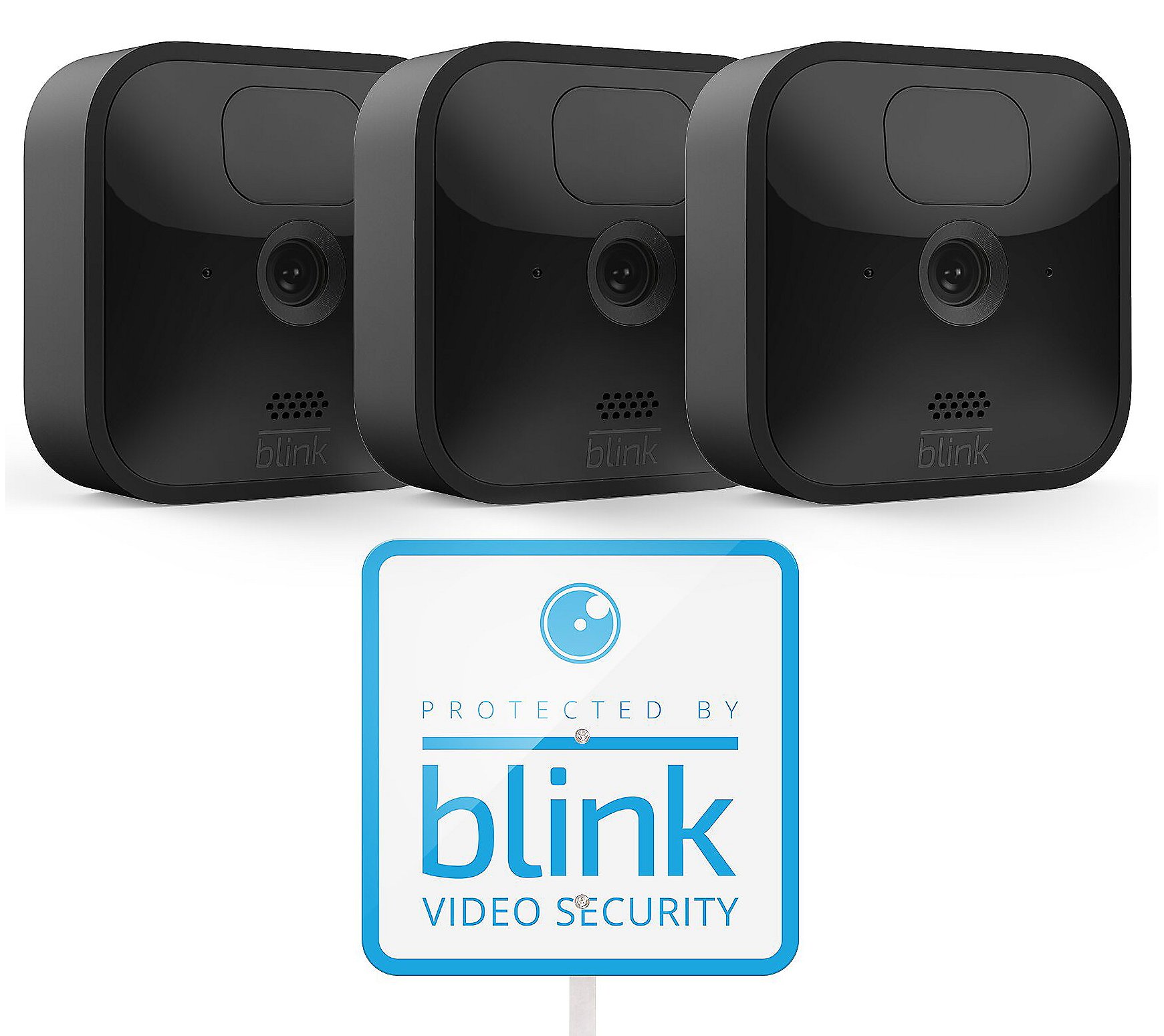Blink Outdoor / In Home 3pk Wireless Cameras with Yard Sign
Includes three Blink Outdoor cameras with three mounting kits, Sync Module 2, USB cable, power adapter, six AA lithium batteries, yard sign, and quick-start guide; 30-day Blink subscription trial. 1080p HD video at up to 30fps. 110-degree diagonal field of view. Supports 2.4Ghz Wi-Fi. Motion-activated alerts.
When it comes to keeping an eye on your home, don’t blink…
Actually, on second thought, DO Blink. Blink in the front of your home. Blink inside your home. Or over the garage door. Blink all over your place!
These Blink Outdoor wireless cameras stand up to the outdoor elements, but they’re equally at home inside. They see what’s happening around your home, remaining vigilant for you.
The three cameras connect to the all-new Sync Module 2 and your home’s Wi-Fi. You can access a live view and two-way audio over your smartphone via the Blink Home Monitor app — no matter where you are.
Each camera is powered by two AA lithium batteries (included), so all you need to do is simply replace the batteries when they’re out of juice — after about two years of normal use.
Thanks to a 30-day Blink trial subscription included in this bundle, you’ll be able to store and save videos and photos. You can also save them locally to the Sync Module 2 using a USB flash drive (not included) — without batting an eye. From Blink.
- Includes three Blink Outdoor cameras with three mounting kits, Sync Module 2, USB cable, power adapter, six AA lithium batteries, yard sign, and quick-start guide; 30-day Blink subscription trial
- 1080p HD video at up to 30fps
- 110-degree diagonal field of view
- Supports 2.4Ghz Wi-Fi
- Motion-activated alerts
- Live View with two-way audio
- Infrared night vision
- Temperature monitoring
- With long-lasting battery life, Blink Outdoor runs up to two years on two AA lithium batteries when used as directed with normal use
- For use with free Blink Home Monitor app; requires iOS 10.3 or Android 5 or newer operating systems
- Alexa-compatible
- Weather-resistant HD security cameras built to withstand the elements to help you protect your home inside or out
- Sync Module 2: USB port for local storage; flash drive (required for local storage) not included
- Each measures approximately 2.8″ x 2.8″ x 1.34″
- UL listed adapter; 1-year LMW
- Imported






by Yankee
they show the nighttime view as clear as a bell – they are not. the day time views are good. i am still struggling to mount two of them. i broke on the of the right angle things, so now I don’t know what to do. I’ve gone to Amazon but they don’t seem to have anything that will work as a mount for this mode. In fact, I can’t find this model Blink anywhere.
by Hane
We started with 3 cameras. Good system for what we need. Came back and purchased another 2 for other areas. We like the option of disarming or arming on our phone, and when away can see what’s going on at home. Night vision good. Helps when an additional light is on near the camera to see even better. Only hiccup is we need to purchase the white covers and unable to find.
by Shawn
We have had Blink for 2-3 years and never had any major issues with it. One time it was our own wifi but the cameras are great! If you have your camera set up in a high traffic area, expect the batteries to die sooner than 2 years. We bought a solar panel for our high traffic camera and the other cameras have never been changed. I’m getting this new unit because we want to 2-way talk and to add to our unit.
by Wendy
The cameras do go off when motion is detected which cause the batteries to not last as long as stated, but we are able to see everything that goes on around our house and that is what matters most. We have see coyotes and foxes come down looking for food so we also know what type of wild animals are in the area. Best purchase ever.